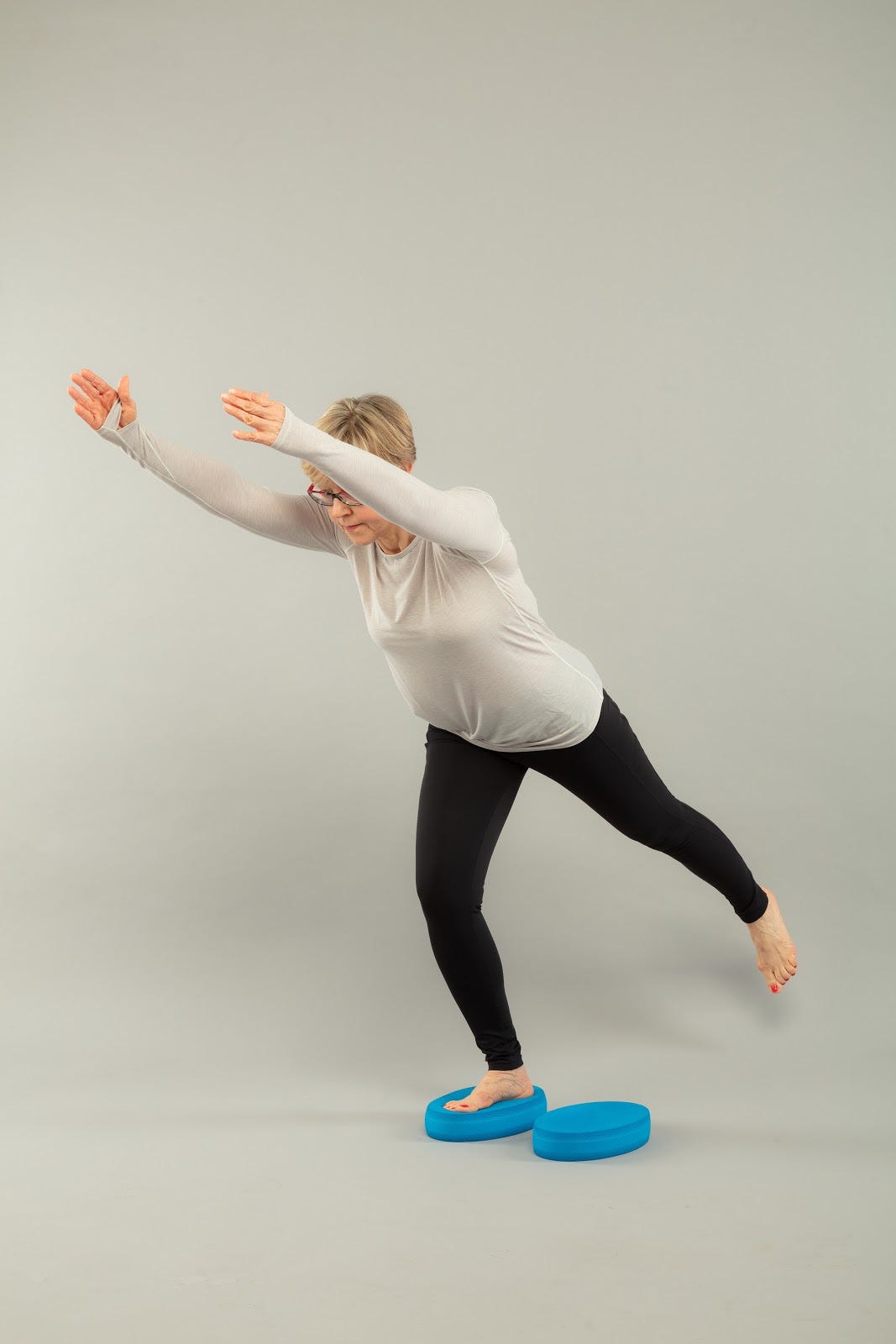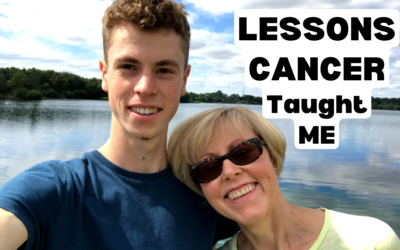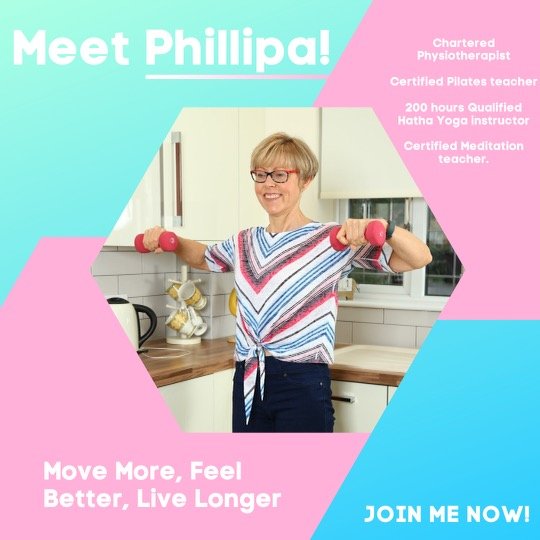The benefits of exercise are undisputed; maintaining bone mass, improving muscle strength and flexibility. My penchant for Pilates to improve bone health is borne out of my many years of experience practicing and teaching Pilates. The recommendations outlined in the recent guidance issued by the Royal Osteoporosis society states that:
Physical activity has an important role in management of osteoporosis; promoting bone strength, reducing the risk of falling and managing pain associated with vertebral fractures. They recommend that that overall “people should do more rather than less”. Everyone can benefit from exercise and it’s never too late to start. Better still get ahead of the game and act now to prevent fracture. The added benefits include; reducing the risk of other medical conditions, improving brain function, gaining in confidence and even being happier!
Why you should do Pilates for your Bones
A majority of women are less aware of the potential Long term health consequences of the menopause. The declining oestrogen levels cause a decrease in bone density and an increased risk of fracture. Not only that the loss of oestrogen leads to a decrease in muscle mass and strength. This muscle weakness contributes to a functional decline and increased risk of falls.
A recent study in 2015 by Endera et al showed that people who participated in Pilates saw an increase in their Bone Mineral Density (BMD), as well as improvements in their physical performance and their quality of life. That’s good enough for me…
Pilates is a series of exercises which can be performed standing or on the mat and allows us to exercise the whole body. Pilates combines working the deep postural and stabilising muscles that maintain good posture and support the spine. With regular practice, Pilates positively changes the body. Pilates is suitable for all ages and levels of ability.
Bone Healthy Pilates focuses on the elements from the repertoire of exercises which I know will benefit bones the most. I incorporates resistance training, balance training and posture correction in no particular order!
Resistance Training
Progressive resistance training to strengthen the muscles that ‘pull’ on bones and weight bearing exercises to ‘Load’ bones will cause a structural strain. The body responds to these stresses by adaptation. This will only occur if the load is sufficient to exceed the training threshold. This is different for each of us but in basic terms the last couple of repetitions of an exercise should feel difficult. As movements get easier the resistance is increased; the frequency and duration of training can also be manipulated to enhance the effects and finally variety is important to prevent us reaching a plateau.

There is no doubt that the Pilates Plank or ‘leg pull in prone’ (left) loads the bones of the wrists and strengthens the muscles of the upper limb and core. Add the ‘side bend’ and the ‘leg pull in supine’ or reverse plank and you have quite a workout for the bones.
Balance Training
Falls are a major cause of fractures, the risk of falling increases as we get older. Poor balance can be due to loss of muscle strength and joint flexibility. But also reduced vision, slower reaction times and even inner ear dysfunction (labyrinthitis, BPPV etc). Anyone who has tried ‘SUP YOGA’ may have discovered that their balance is ‘not as good as it used to be’. The ACSM exercise prescription guidelines (2011) recommend:
- Progressively more difficult postures that gradually reduce the base of support: standing on 1 leg for example,
- Dynamic movements which disturb the centre of gravity: moving arms about whilst balancing on 1 leg!

- Strengthening postural muscles: they literally ‘hold us up’,
- Reducing sensory input: this could be as simple as closing your eyes whilst balancing.
Activities that promote good balance such as Pilates are recommended (Bird ML and Fell J) in the ‘fight’ against falling and fracture. With a significant repertoire of standing pilates exercises, we can definitely challenge the balance. And if you want to take it to the next level we incorporate Balance Pads.
Posture and Back Care
As a Chartered Physiotherapist this is a ‘non-negotiable’ for me and what I love about Pilates is that we combine the principles of ideal posture and alignment into every movement we make. Not only that but by activating the stabilising muscles of the lumbar spine and pelvis as we move; this actually serves to support and protect the spine.
The extensor muscles are key in the fight against the effects of gravity. The exercises that extend the spine backwards have actually been shown to reduce the risk of wedge compression fractures in the spine, whereas flexion increases the risk. (Sinaki at Mikkelson, 1984)

Swimming Level 4
Pilates mat exercises lying on your front such as the Breastroke prep target these back extensors. Better still the swimming Level 4 (pictured) combines back and hip extensor activation, core muscle activation and we load the bones of the wrist. A win win!
Are there any exercises that we should avoid?
The guidance issued by the Royal Osteoporosis Society suggests that there is some conflicting advice around exercises or movements that should be avoided. Remember that even with a diagnosis of osteoporosis we still need to be able to reach our feet! So that ‘bending is generally safe unless you overly flex or force yourself to the limit’.

So a good dose of common sense is required and only movements which involve repetitive, sudden uncontrolled movements putting pressure on your spine in a curved position are inadvisable. Examples include rolling like a ball, roll up and roll over (pictured).
The guidance is clear exercise is vital to protect bone, and in my humble opinion Pilates is a great place to start. So by incorporating resistance training, practicing balancing, maintaining joint mobility (flexibility) and strengthening the core muscles we have a recipe for success. Easy for me to say!
That is why I recommend seeking out the guidance of an experienced professional with a special interest in promoting Bone Health through Pilates to guide you. Menopause is a time of change, so embrace this opportunity and to some time for yourself to adopt a happier, healthier, bone friendly, Pilates infused lifestyle.
Listen to Phillipa talk all about bones on the Precizion Podcast.
Author: Phillipa Butler Chartered Physiotherapist MSc APPI AACP
CEO Precizion Ltd
References:
J Christopher Gallagher and Sri Harsha Tella (2014) Prevention and treatment of postmenopausal osteoporosis, J Steroid Biochem Mol Biol. 142: 155–170.
www.nhs.uk/menopause-and-your-bone-health (https://www.nhs.uk/conditions/osteoporosis/)
Endera A, Erden Z, Can F (2015) The effects of clinical pilates exercises on bone mineral density, physical performance and quality of life of women with postmenopausal osteoporosis. Journal of Back and Musculoskeletal Rehabilitation , vol. 28, no. 4, pp. 849–858
American college of sports medicine (2011), Position stand: quality and quantity of exercise for developing and maintaining cardiorespiratory, musculoskeletal and neuromuscular fitness in apparently healthy adults:guidance for prescribing exercise. Medicine and science in sports and exercise 43(7):1334–1359
Bird M L and Fell J (2014,) Positive long term effects of Pilates exercise on the age-related decline in balance and strength in older community dwelling men and women. J Aging Phys Act. 2014 Jul;22(3):342-7.
M Sinaki, B A Mikkelsen (Oct1984) Postmenopausal spinal osteoporosis: flexion versus extension exercises, Arch Phys med rehabil. 65(10):593–6.
The Royal Osteoporosis society, (2019) Strong, Steady and Straight: An expert consensus statement on physical activity and exercise for osteoporosis.












